Health Insurance in California payment for Corona Virus
Testing, Quarantine, Treatment, Hospitalization,
enrollment and premium payments?
Government Programs for Financial Relief
Free Covid Vaccine if you have Insurance
- Excerpt from CA Department of Insurance
- Health insurers regulated by the state of California are currently required to cover the following free of charge to patients: •
- COVID-19 diagnostic testing, including over-the-counter (OTC) COVID19 tests, and any health care items or services that are necessary for delivery of the testing. •
- COVID-19 vaccines, and any health care items or services that are necessary for delivery of the vaccine.i •
- COVID-19 therapeutics, including Paxlovid, Legevrio, and Veklury (remdesivir) administration.ii
- Regardless of whether you receive these benefits from an in-network or outof-network provider, your health insurer must cover the benefits without medical management, including prior authorization.
- In addition, health insurers must cover COVID-19 testing, vaccines, and therapeutics without cost sharing, including a deductible, copayment, or coinsurance.
- How long will the current coverage requirements stay in place?
- Requirements for health insurers to cover COVID-19 testing, vaccines, therapeutics, and related health care benefits from an in-network provider without out-of-pocket cost are permanent.iii Read More – CA Department of Insurance *
- Blue Shield Participating Pharmacies
- CVS Website
Employer COVID 19 Relief Options
This page never really got much traffic. We are no longer going to update it. If you have questions on Insurance & Covid, email us, [email protected] if the answer isn’t here.
Get your FREE Covid Tests
Miscellaneous Links
- Coronavirus vaccines, once free, are now pricey for uninsured people The elimination of the Bridge Access Program means some low-income Americans must pay up to $200 for an updated shot. Read More – Washington Post September 2024
- When you have covid, here’s how you know you are no longer contagious
- COVID hospitalizations, deaths surge in California — and worst is yet to come, CDC warns January 2024
- Preventative Care – Wellness Visit – Medicare
- The Black Death: The World’s Most Devastating Plague Great Courses – Wonderium VIDEO
- Essential Worker Shoulders $1,840 Pandemic Debt Due To COVID Cost Loophole
- Total Cost of Her COVID-19 Treatment: $34,927.43
- China (Racist) Corona Virus? How killer coronavirus attacks the body from pneumonia to kidney failure – as 6 die and ‘thousands infected’
- Covered CA Special Enrollment Rules
- Guidance Relating to Non-Discrimination in Medical Treatment for Novel Coronavirus 2019 (COVID-19)
- Marketplace Pre and Post the COVID-19 Pandemic
- Supreme Court – Corona Virus and Religious Freedom
- Coronavirus and COVID-19 EEOC
- California’s new workplace laws: COVID-19 safety, family leave and more
- Resilience Compass to find the business resources you need
- Her COVID-19 treatment cost more than $1 million. Who’s going to pay for it?
- Definitions OOP, Deductible, Maximum Out of Pocket, etc.
- Grandfathered Policies
- Op-Ed: On the front lines, here’s what the seven stages of severe COVID-19 look like
- FDA Grants Full Approval to Pfizer-BioNTech COVID-19 Vaccine
- Covid Delta Variant
- Vaccines.gov
- Op-Ed: Doctors like me have a lot of anger at this new COVID-19 surge
- California to offer vaccine incentive to Medicaid population
- Free COVID tests and treatments no longer free for uninsured, as funding runs out
- How to use the CDC’s new COVID quarantine and isolation calculator
- Uninsured Americans now to be charged up to $195 per COVID test by some providers: report
- Information About COVID-19 Coverage, Cost and Access to Care
- COVID-19 Resources
- CA Department of Public Health
- Biden Administration to Stop Reimbursing Hospitals for Covid-19 Care for Uninsured
- New COVID-19 sick pay for California workers approved by lawmakers
- Coronavirus FAQ: Is Paxlovid the best treatment? Is it underused in the U.S.?
- Opinion: The U.S. is facing the biggest COVID wave since Omicron. Why are we still playing make-believe?
Insurance Company Bulletins on Coronavirus Test & Treatment
Under Health Insurance Coverage
Aetna – CVS
Our Employer Webpage
Press Releases
AIG Life Insurance
Cigna Insurance
Blue Shield
Our Employer Webpage Groups
FAQ’s
Premium Payment Flexibility Email us [email protected] if link doesn’t work
No Co Pays or Deductibles for treatment
Search Results for Corona Virus
Blue Cross
Coronavirus Member FAQ
Coronavirus Educational Flyer
Coronavirus Broker Employer FAQ
Our Employer Group Webpage
Individual & Families
CA Department of Insurance
All Lines of Insurance
What if I cannot pay my insurance premiums?
Grace Period extended to July 14th!
Requesting a 60-day grace period to pay insurance premiums – On March 18, 2020, the Department issued a Notice requesting all insurance companies provide their policyholders with at least a 60-day grace period to pay their premiums.
Consumers should contact their insurance company if they need additional time to pay their premium.
Cal Choice
► CaliforniaChoice COVID-19 FAQs – Download
► COVID-19 Additional Resources – Download
Enrollment is OPEN due to pandemic!
Rate Increase for COVID 19?
The COVID-19 outbreak could cause premiums for individuals and employers to spike from 4% to 40% next year, according to a study from Covered CA!
Treatment costs could also vary dramatically, as they could be roughly $30,000 per admission for COVID-19. That figure is based on Medicare rates and the average length of stay of 12 days, which is a similar length for other respiratory cases such as the flu or pneumonia. Fierce Health Care *
$1.1 million, 181 page hospital bill
Medi – Cal
-
- Public Health Crisis or Disaster Reminders for Medi-Cal
-
- Access to Care During Public Health Crisis or Disaster for Medi-Cal
County Office Contact Information
Geo Blue
Health Net
Our Employer Group Webpage
Employer Notice
Member Notice
What you need to know about Coronavirus
Broker Bulletins – including Special Enrollment
Our Individual Page for Kaiser
Group Page
FAQ’s
Facility Closures & Consolidations
LA Care
Payments
National Assoc of Health Underwriters
Medicare
Our Medicare Website
Older Adults
medicare.gov/medicare-coronavirus
Our webpage for Molina
Employer Group
Sharp
Employer Group Website
Sutter Health
Coverage & Cost
Employer Group Website
Our Webpage on Sutter Individual with more information
uhc.com/faq-employer
Employer Group Website
Medicare
Medicaid
Warner Pacific – Wholesaler
Western Health Advantage
More info /covid19
More Links
Workers Compensation
Insurance Journal.com
Our webpage on what Worker’s Comp covers
Testing with No Co-Pays, Deductibles, No Out of Pocket, etc.
Californian’s who fit the testing requirements (visit our webpage on Medical Necessity) will receive the test at no charge. This could be a $1331 expense conservatively Real Clear Politics * Governor Newsom and Insurance Commissioner Lara announced Thursday March 5th. * Los Angeles Times 3.5.2020 *
Criteria for Testing
Do you need the test?
City of Los Angeles – Schedule a Test if you have symptoms or been in contact with an infected person.
Los Angeles Times Steve Lopez 3.24.2020 on what to do if you think you have the virus?
Testing – from swab to result – LA Times 4.1.2020
You may need testing if you have symptoms of infection and have recently traveled to parts of the world where infection rates are high. You may also need testing if you have had close contact with someone who has traveled to one of those areas.
Symptoms of coronavirus infections include:
Symptoms of COVID-19 are usually milder than those of SARS and MERS.
The symptoms of COVID-19 include:
- Fever
- Cough
- Shortness of breath
If you have symptoms and have not traveled to areas where infection rates have been high or been exposed to someone who has, it’s highly unlikely that you have one of these new coronaviruses. You may have another type of virus, such as the flu. The flu is much more common in the United States than the new coronaviruses.
If you test Positive
If your results were positive, it means you probably have a coronavirus infection. There is no specific treatment for these infections, but your health care provider may recommend steps to relieve your symptoms. These include:
- Drinking plenty of fluids
- Resting
- Taking over-the-counter pain relievers
Learn more —
cdc.gov/coronavirus/lab-testing
Visit our webpage on Medical Necessity
Anthem Blue Cross
COVID Resource Center
Coverage of COVID 19
Rev 8.2020
10% premium discount for August 2020
More COVID FAQ's
Email us, if any links require a password
Michael Flor leaves hospital after 62 day stay for COVID 19
$1.1 million, 181 page hospital bill
MORE COVID VIDEOS
- How it Works VIDEO
- Steve’s VIDEO Lost your job – how to keep your Health Insurance
- Blue Shield Support for Business VIDEO
- Steve VIDEO explaining this page
- TeleMed VIDEO how it works – Oscar Insurance
- Oscar VIDEO on Corona Virus
- Why Social Distancing is so Important – Sutter VIDEO
- HOW COVID-19 KILLS–I’m a Surgeon–And Why We Can’t Save You VIDEO
- VIDEO Vincent Price Last Man on Earth
- Wikipedia
- In the year 1968, every day is the same for Dr. Robert Morgan (Price): he wakes up, gathers his weapons, and then goes hunting for vampires. Morgan lives in a world where everyone else has been infected by a plague that has turned them into undead, vampiric creatures that cannot stand sunlight, fear mirrors, and are repelled by garlic. They would kill Morgan if they could, but they are weak and unintelligent. At night, Morgan locks himself inside his house; during the day, he kills as many vampires as he can, burning the bodies.
- Wikipedia
- Documentary – Origins of the Wuhan Coronavirus VIDEO
- Documentary 1918 Flu Epidemic VIDEO
- Global Responses to COVID Consul Generals of Canada & South Korea VIDEO
Government Public Health Agencies
- CA Department of Public Health
- Centers for Disease Control & Prevention
- State of Israel – Very Detailed in English
- California State Disability Insurance
- Department of Industrial Relations – Paid Sick Leave
- World Health Organization
- World Meter Statistics
- US Department of Labor – Pandemic
- Small Biz Administration
- Covid 19 Loans
- CA State Senator Steve Bradford’s Links & Tools
- sd35.senate.ca.gov/covid-19-resources
- State of CA
- covid19.ca.gov
Social Service Agencies
Resources available from AARP
Mental Health Treatment
Our webpage on Medicare Mental Health
Limitations – Medical Necessity
NAMI on COVID 19 Anxiety, lonely, homelessness, serious Mental Illness
Anxiety about the Corona Virus
- checking several times a day can keep us in an escalated state of anxiety
- NPR Mental Health & COVID
- sticking to reliable sources of coronavirus information such as the U.S. Centers for Disease Control and Prevention (CDC).
- taking reasonable precautions,” safety advice from the CDC,
- such as frequent handwashing;
- stay home if you don’t feel well;
- get enough sleep and
- take good care of your immune system.
- “Preparing a plan for the future, such minimizing exposure to large crowds, makes sense and can help reduce anxiety,” UCSF.edu
- Fear is a normal, necessary evolutionary response to threat – ultimately designed to keep us safe. Whether the threat is emotional, social or physical, this response is dependent on a complex interaction between our primitive “animal brain” (the limbic system) and our sophisticated cognitive brain (the neo-cortex).
- People with health anxiety, preoccupied with health-related information or physical symptoms, are also at risk of worsening mental health as the virus spreads.
- stop checking. For example, avoid looking for signs of illness. You are likely to find unfamiliar physical sensations that are harmless but make you feel anxious. Normal physical changes and sensations pass in time, so if you feel your chest tighten, shift your focus onto pleasurable activities and adopt “watchful waiting” in the meantime.
- At times of stress and anxiety, hyperventilation and shallow breathing is common. Purposeful, regular breathing can therefore work to reset the fight or flight response and prevent the onset of panic and the unpleasant physical symptoms associated with anxiety. Science Alert. com
- Psychiatrist’s Guide to Coping with COVID 19 Jennifer Yashari MD
- help with food, housing, job training, transportation and other social support. Aunt Bertha to connect individuals and families to social services in their communities. visit Aunt Bertha and enter your ZIP code.
Coronavirus Aid, #Relief, and Economic Security (CARES) Act.
- SBA – here you will find information on all COVID-19 related programs that SBA is providing, including the Paycheck Protection Program, Economic Injury Disaster Loans and Emergency Grants, and Small Business Debt Relief.
- Department of Treasury – here you will find information on the Paycheck Protection Program, as well as other tax provisions meant to help employers, including non-profits.
Small Biz Owner Guide to the Cares Act
- Our webpage on the CARES act
- How Insurance covers COVID 19
- CARES Act --- Steptoe.com
- FAQ's o PPP Loans from Senate Committee
- White Paper on Helping Small Biz Clients Plan in COVID 19 ERA - from the American College of Financial Services
- ERC Employee Retention Credit
Chamber of Commerce
Short 4 page explanation
Our webpage on Coronavirus loans
Paycheck Protection PPP Loan Forgiveness! vs SBA Economic Injury Disaster Loan EIDL
- FAQ's from Senate Committee
Just Enter your census or securely send us an excel spreadsheet or a list of employees and get instant proposals for California
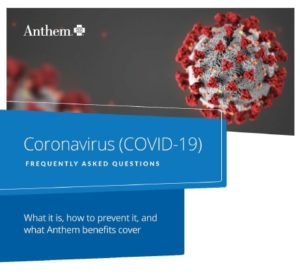
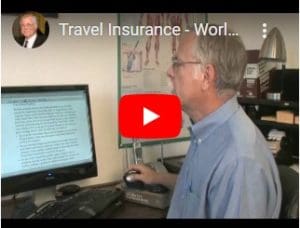

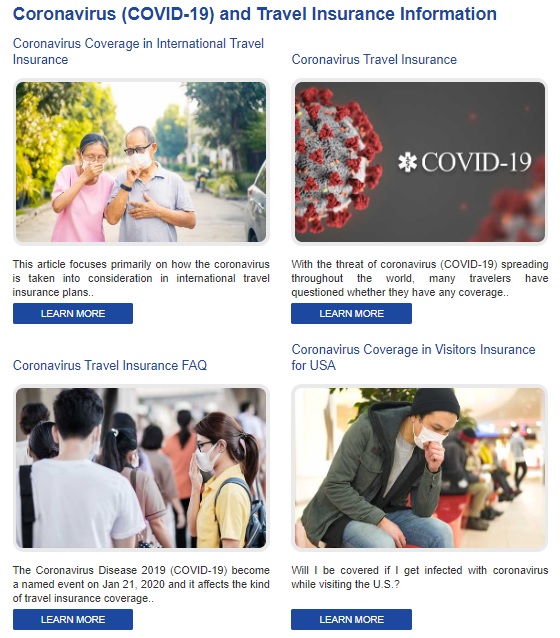

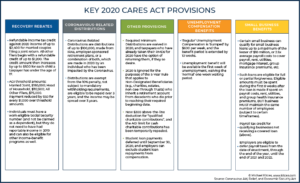
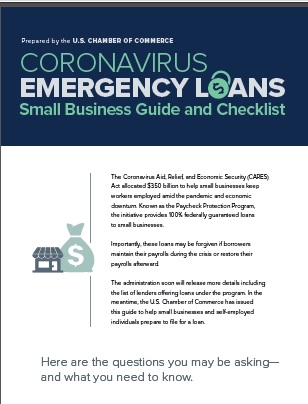
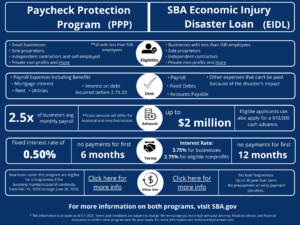

https://kffhealthnews.org/morning-breakout/viewpoints-how-we-prepare-for-the-next-pandemic-we-must-revamp-our-health-insurance-system/
https://www.cdc.gov/covid/vaccines/stay-up-to-date.html
https://adaa.org/understanding-anxiety/coronavirus-anxiety-helpful-resources
https://www.uhc.com/health-and-wellness/health-topics/covid-19#faq
https://kffhealthnews.org/morning-breakout/botnet-that-stole-nearly-6-billion-in-us-covid-relief-funds-is-shut-down/
CNN Video
Asians and Asian Americans are facing increased discrimination linked to the spread of the novel coronavirus, impacting businesses as well as individuals. In New York City’s Chinatown, restaurant owner Rose Wu says business has dropped significantly since the coronavirus outbreak.
https://www.facebook.com/cnn/videos/627793157788637/
Check my webpage above, I have a video from Dr. Duc C. Vuong posted on Coronavirus.
Yesterday I watched this webinar
I was impressed with Dr. Vuong showing his credentials, Mr. Cheung didn’t say anything, but his diplomas were behind his desk. Yesterday, I added a picture of my credentials to my bio page.
Boy, I had to search and search my website and emails to find what you might be referring to.
The only thing I found was the graphic that was the most authoritative thing I could find at the time in an article dated January 21, 2020 and maybe some alt tags.
Very few people are viewing my pages on Health Coverage for Coronavirus. ONLY ONE person has contacted me about getting coverage under the special enrollment period for corona virus!
Since I’m under stay at home orders, I haven’t seen any discrimination against Asians.
We called it the Spanish Flu, German Measles
Here’s an article about language evolving and no longer using countries to name a disease.
17 diseases names after places, countries or people.
Do you think the COUNTRY of China did what they could to contain the disease from spreading throughout the world? I won’t even go into those who think it’s a bio weapon.
In this case however, it’s even more important to identify the new Wuhan coronavirus sweeping the globe with its origin in the Chinese city of Wuhan as China tried to mask the warning signs of a global outbreak and downplay its severity leading to what the World Health Organization has now declared a “global pandemic.”
Auschwitz. Treblinka. The Warsaw Ghetto. During World War II, Poland became the epicenter of the Nazis’ crimes—but soon, implying that those crimes were committed by the Polish state will itself be a crime.
new law in Poland makes it illegal to accuse the nation of being complicit with Nazi crimes like the Holocaust. It also outlaws the phrase “Polish death camps.” Both are punishable by prison sentences of up to three years. https://www.history.com/news/poland-holocaust-law-death-camps
Thus, IMHO that’s why I crossed out China and didn’t eliminate it. Why deny that this was a named used for this pandemic.
What about the non-chinese in China? https://en.wikipedia.org/wiki/List_of_ethnic_groups_in_China